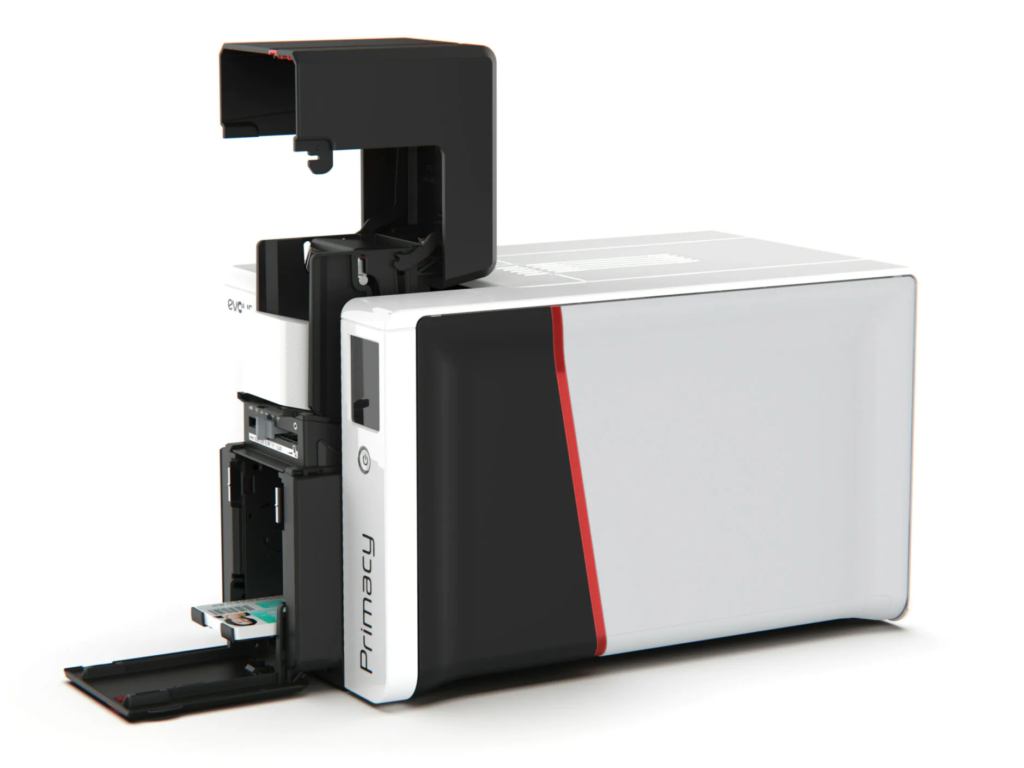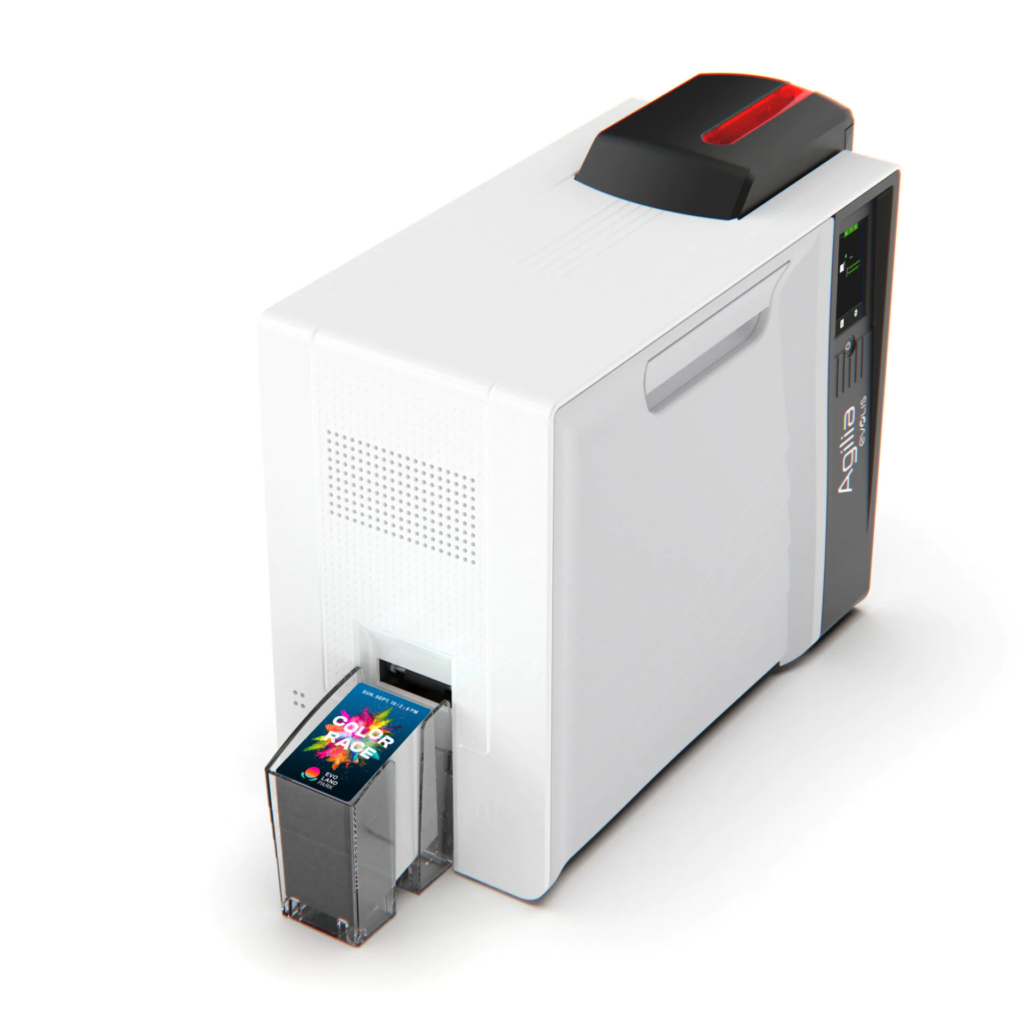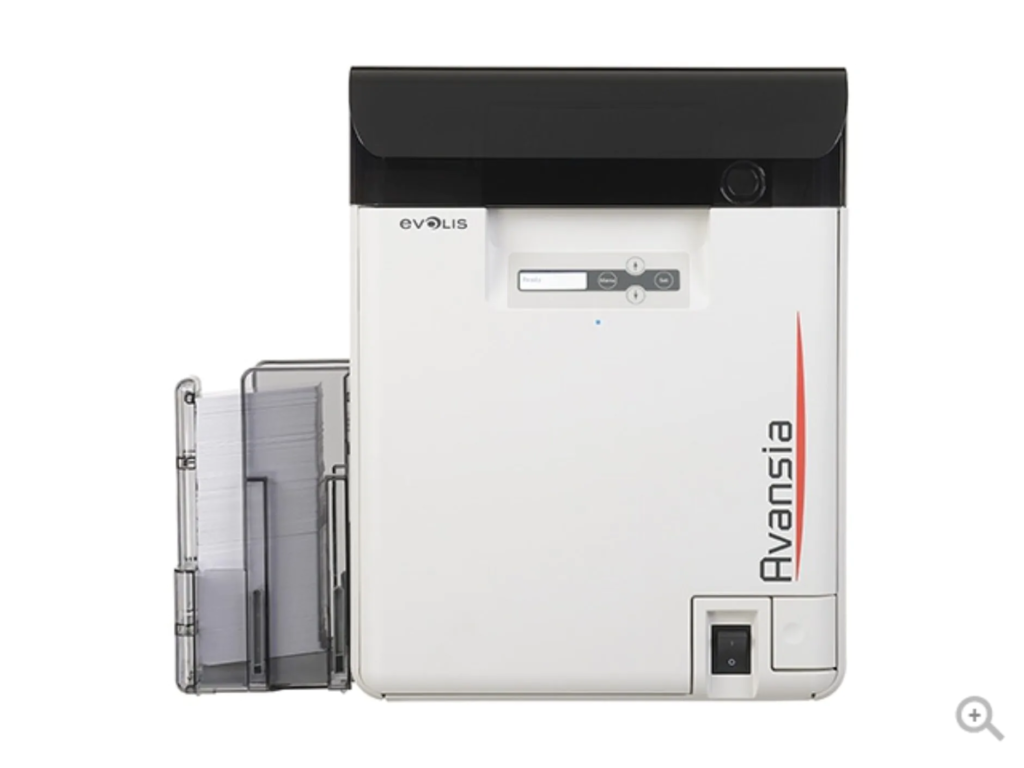
ID Card Printer: Direct-to-Card vs. Retransfer – Which One Suits Your Needs?
Whether you’re printing employee badges, student IDs, or secure access cards, selecting the right ID card printer ensures crisp images, durability, and efficiency. The market offers two main printing technologies—direct-to-card (DTC) and Retransfer—each with distinct advantages. Understanding their differences will help you make the best choice for your needs. This guide examines both technologies in detail to help you determine which solution best fits.
Understanding the DTC ID card printer
Direct-to-Card (DTC) printing remains one of the most widely used methods for producing ID cards. In this process, the print head applies ink directly onto the card’s surface using dye-sublimation or thermal transfer. This method works exceptionally well for standard PVC cards, offering fast printing speeds and lower per-card costs.
However, because the print head does not completely cover the card’s edges, a slight white border often remains visible. Additionally, DTC printers may struggle with uneven surfaces, such as smart cards with embedded chips, which can affect print quality.

Learn about retransfer ID card printer
Retransfer printing, also known as reverse transfer or high-definition printing, follows a two-step process. First, the printer transfers the image onto a transparent film. Then, heat permanently bonds the film to the card. Since the print head never touches the card directly, retransfer printing achieves true edge-to-edge coverage and superior print quality on various card materials.
This method excels in high-resolution printing and works seamlessly on uneven surfaces, including smart cards. However, retransfer printers generally operate at slower speeds and carry a slightly higher per-card cost compared to DTC printers.
Comparing Printing Speed and Efficiency
When speed matters most, direct-to-card printers outperform retransfer models. They efficiently handle large-volume printing, making them ideal for organizations that need to produce hundreds of ID cards quickly. For example, the Evolis Primacy 2 ID Card Printer delivers high-speed performance, printing up to 280 single-sided colour cards per hour.
While slower, retransfer printers prioritize image quality over speed. The Evolis Avansia Retransfer Card Printer produces exceptionally sharp and durable prints, even if it takes slightly longer per card.

Image Quality and Printing Coverage
Retransfer printing stands out for its flawless image quality and complete edge-to-edge coverage. Because the image first prints onto a transfer film before fusing onto the card, colours appear more vibrant, and fine details remain crisp. The Evolis Avansia Retransfer Printer, for instance, delivers professional-grade 600 dpi resolution, making it perfect for high-security credentials or premium ID cards.
DTC printers, while still producing good-quality prints, may leave minor white borders and lack the same level of detail. For standard ID card needs, however, they remain a reliable choice. The Evolis Zenius Card Printer offers an affordable DTC solution without sacrificing essential print quality.
Card Compatibility and Durability
Retransfer printers accommodate a broader range of card materials, including smart cards with embedded chips, textured surfaces, and speciality PVC blends. The additional film layer also enhances durability, protecting the print from scratches and fading over time.
DTC printers perform best with smooth, standard PVC cards. While they support encoding options (such as magnetic stripes or RFID), they may struggle with non-flat card surfaces. The Evolis Primacy 2 Card Printer handles various encoding needs but may require adjustments for speciality cards.

Cost Analysis: Initial Investment vs. Long-Term Expenses
DTC printers typically require a lower upfront investment, making them an attractive option for budget-conscious organizations. The Evolis Zenius Card Printer, for example, provides an economical entry point for single-sided ID card printing. However, because DTC prints may wear faster, organizations might face higher long-term costs from reprints.
Retransfer printers demand a higher initial purchase price, but their superior durability and print quality reduce replacement frequency. Over time, this can lead to significant savings, especially for high-security or long-lasting credentials.
Recommended Use Cases and Applications
DTC Printers are best for fast, high-volume printing of standard PVC cards where edge-to-edge printing is not critical. They are ideal for schools, small businesses, and events requiring quick badge production. The Evolis Primacy 2 serves as an excellent mid-to-high-volume DTC solution.
Retransfer Printers are perfect for organizations needing premium-quality, durable cards with full-edge printing. Government agencies, corporate security teams, and universities often prefer retransfer technology. The Evolis Avansia ensures professional, long-lasting results.

Selecting the Right ID Card Printer
Choosing between DTC and retransfer printers depends on your priorities: speed, cost, print quality, and card durability. Opt for DTC printing if you need affordable, fast production of standard ID cards. Choose retransfer printing if you require high-resolution, edge-to-edge prints on various materials, including smart cards.
DCCO offers a range of printers—such as the Zenius, Primacy 2, and Avansia—to match different needs. By evaluating your organization’s requirements, you can select the best ID card printer for efficiency, quality, and long-term value.
Would you like recommendations based on your specific volume and card type needs? Contact us now!


